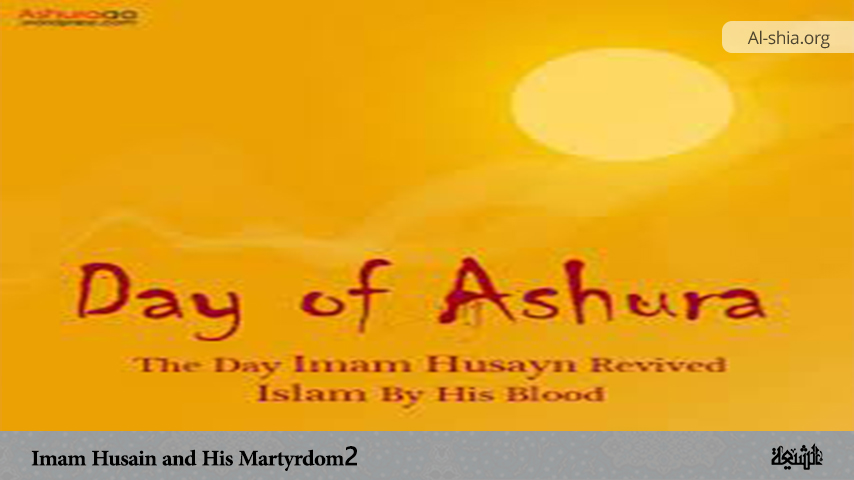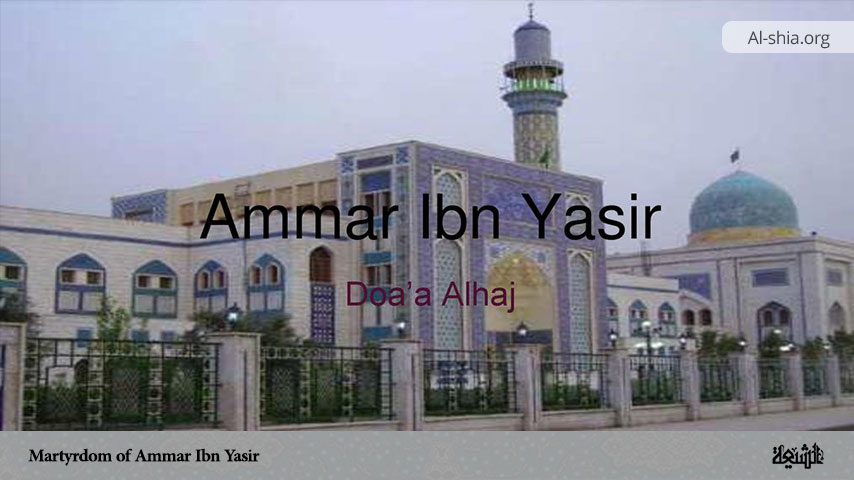In this part of the article titled “Imam Husain and his martyrdom”, we shall discuss some other relevant issues related to the martyrdom of Imam Husain (a.s).
Abundant water & tragedy of thirst
From the most ancient times, this tract of the lower Euphrates has been a garden. It was the cradle of early civilization, a meeting place between Sumer and Arabs, and later between the Persians and Arabs. It is a rich, well-watered country, with date palms and pomegranate groves. Its fruitful fields can feed populous cities and its luscious pastures attract the nomad Arabs of the desert, with their great flocks and herds. It is of particularly tragic significance that on the border of such a well-watered land, should have been enacted the tragedy of great and good men dying of thirst and slaughtered because they refused to bend their knees to the forces of iniquity. The English poet’s lines “Water, water everywhere, and not a drop to drink” are brought home forcibly to you in this borderland between abundant water and desolate sands.
Karbala and Its Great Dome
I remember the emotion with which I approached Karbala from the East. The rays of the morning sun gilt the Gumbaz-i-Faiz, the great dome that crowns the building containing the tomb of Imam Husain. Karbala actually stands on one of the great caravan routes of the desert. Today the river city of Kufa, once a Khilafat capital, is a mere village, and the city of Najaf is famous for the tomb of Hazrat Ali, but of little commercial importance. Karbala, this outpost of the desert, is a mart and a meeting ground as well as a sacred place. It is the port of the desert, just as Basra, lower down, is a port for the Persian Gulf. Beautifully kept is the road to the mausoleum, to which all through the year come pilgrims from all parts of the world. Beautiful coloured enamelled tiles decorate the building. Inside, in the ceiling and upper walls, there is a great deal of glass mosaic.
The glass seems to catch and reflect the light. The effect is that of rich coruscations of light combined with the solemnity of a closed building. The tomb itself is in a sort of inner grill, and below the ground is a sort of cave, which is shown as the actual place where the Martyr fell. The city of Najaf is just about 40 miles to the South, with the tomb of Hazrat Ali on the high ground. You can see the golden dome for miles around.
Just four miles from Najaf and connected with it by a tramway is the deserted city of Kufa. The mosque is large but bare and practically unused. The blue dome and the Mihrab of enamelled tiles bear witness to the ancient glory of the place.
Cities and their Cultural Meaning
The building of Kufa and Basra, the two great outposts of the Muslim Empire, in the 16th year of the Hijra, was a visible symbol that Islam was pushing its strength and building up a new civilization, not only in a military sense but in moral and social ideas and in the sciences and arts. The old effete cities did not content it, any more than the old and effete systems which it displaced.
Nor was it content with the first steps it took. It was always examining, testing, discarding, and re-fashioning its own handiwork. There was always a party that wanted to stand on old ways, to take cities like Damascus readymade that loved the ease and the path of least resistance. But the greater souls stretched out to new frontiers – of ideas as well as geography.
They felt that old seats were like dead wood breeding worms and rottenness that were a danger to higher forms of life. The clash between them was part of the tragedy of Karbala. Behind the building of new cities, there is often the burgeoning of new ideas. Let us, therefore, examine the matter a little more closely. It will reveal the hidden springs of some very interesting history.
Vicissitudes of Mecca and Medina
The great cities of Islam at its birth were Mecca and Medina. Mecca, the centre of the old Arabian pilgrimage, the birthplace of the Prophet, rejected the Prophet’s teaching and cast him off. Its idolatry was effete; its tribal exclusiveness was effete; its ferocity against the Teacher of the New Light was effete. The Prophet shook its dust off his feet and went to Medina. It was the well-watered city of Yathrib, with a considerable Jewish population. It received with eagerness the teaching of the Prophet; it gave asylum to him and his Companions and Helpers. He reconstituted it and it became the new City of Light.
Mecca, with its old gods and its old superstitions, tried to subdue this new Light and destroy it. The human odds were in favour of Mecca. But God’s purpose upheld the Light and subdued the old Mecca. But the Prophet came to build as well as to destroy. He destroyed the old paganism and lighted a new beacon in Mecca – the beacon of Arab unity and human brotherhood.
When the Prophet’s life ended on this earth, his spirit remained. It inspired his people and led them from victory to victory. Where moral or spiritual and material victories go hand in hand, the spirit of man advances all along the line. But sometimes there is a material victory, with a spiritual fall, and sometimes there is a spiritual victory with a material fall, and then we have tragedy.
Spirit of Damascus
Islam’s first extension was towards Syria, where the power was centred in the city of Damascus. Among living cities, it is probably the oldest city in the world. Its bazaars are thronged with men of all nations, and the luxuries of all nations find a ready welcome there. If you come to it westward from the Syrian Desert, as I did, the contrast is complete, both in the country and in the people.
From the parched desert sands, you come to fountains and vineyards, orchards and the hum of traffic. From the simple, sturdy, independent, frank Arab, you come to the soft, luxurious, sophisticated Syrian. That contrast was forced on the Muslims when Damascus became a Muslim city.
They were in a different moral and spiritual atmosphere. Some succumbed to the softening influences of ambition, luxury, wealth pride of race, love of ease, and so on. Islam stood always as the champion of the great rugged moral virtues. It wanted no compromise with evil in any shape or form, with luxury, with idleness, with the seductions of this world. It was a protest against these things. And yet the representatives of that protest got softened at Damascus. They aped the decadent princes of the world instead of striving to be leaders of spiritual thought. Discipline was relaxed, and governors aspired to be greater than the caliphs were. This bore bitter fruit later.
To be continued!


















